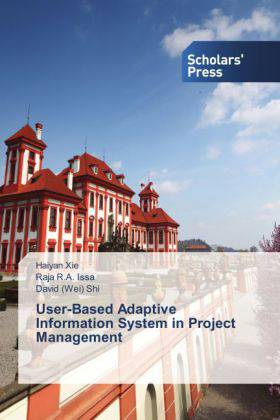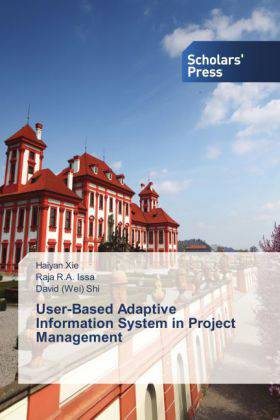
Je cadeautjes zeker op tijd in huis hebben voor de feestdagen? Kom langs in onze winkels en vind het perfecte geschenk!
- Afhalen na 1 uur in een winkel met voorraad
- Gratis thuislevering in België vanaf € 30
- Ruim aanbod met 7 miljoen producten
Je cadeautjes zeker op tijd in huis hebben voor de feestdagen? Kom langs in onze winkels en vind het perfecte geschenk!
- Afhalen na 1 uur in een winkel met voorraad
- Gratis thuislevering in België vanaf € 30
- Ruim aanbod met 7 miljoen producten
Zoeken
User-Based Adaptive Information System in Project Management
Haiyan Xie, Raja R.A. Issa, David Wei Shi
Paperback | Engels
€ 142,95
+ 285 punten
Omschrijving
Project management involves a lot of decision-making processes. From the decision to initiate planning, to the final decision of decommissioning, the diverse participants collaborate in a continuous effort to define and achieve the ever-changing set of multiple objectives of a project. The flow of information required among all participants is enormous, diverse, and detailed, yet dynamic. People often go to great lengths to obtain useful information to make decisions. The clumsy searching process and excessive requirements of users ability with database query languages will affect the usability of systems. Based on the analysis of the project management user model, the authors aimed to build an efficient and practical request-break-down and information-retrieval model. By using this model, the authors hope to help project participants develop a more suitable tool for retrieving the intended information. The authors also analyzed what the project-management software should provide to users through detailed case studies, thus showing the significance of understanding users and their needs.
Specificaties
Betrokkenen
- Auteur(s):
- Uitgeverij:
Inhoud
- Aantal bladzijden:
- 372
- Taal:
- Engels
Eigenschappen
- Productcode (EAN):
- 9783639711417
- Verschijningsdatum:
- 22/04/2014
- Uitvoering:
- Paperback
- Afmetingen:
- 150 mm x 220 mm
- Gewicht:
- 511 g

Alleen bij Standaard Boekhandel
+ 285 punten op je klantenkaart van Standaard Boekhandel
Beoordelingen
We publiceren alleen reviews die voldoen aan de voorwaarden voor reviews. Bekijk onze voorwaarden voor reviews.









